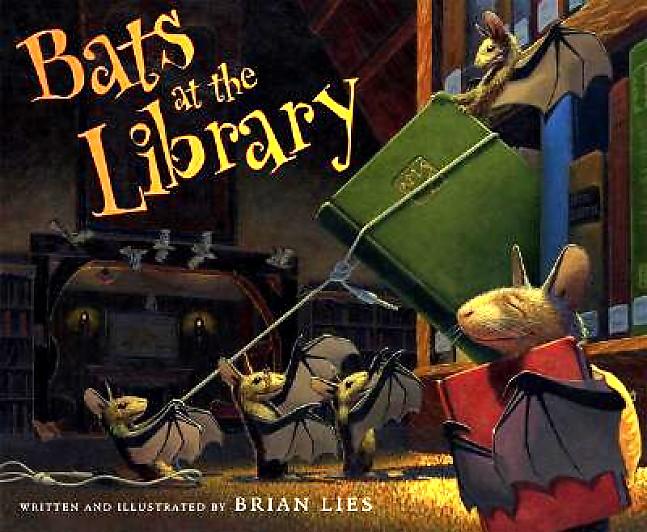 by Brian Lies
by Brian Lies
Bats are excited to find that a window has been left open at the town’s library, so they head over for a “Bat Night at the library”! The bats have a great time playing and reading.
Strategies/Skills Used
Reading Strategy 1: Access background knowledge.
Reading Strategy 2: Predict what will be learned or what will happen.
Reading Strategy 3: Figure out unknown words.
Reading Strategy 4: Self-monitor and self-correct.
Reading Strategy 5: Make mental pictures.
Reading Strategy 6: Connect what you read with what you already know.
Reading Strategy 7: Determine the most important ideas and events and the relationship between them.
Reading Strategy 11: Make inferences and draw conclusions.
Reading Strategy 12: Reflect and respond.
Writing Skill 1: I generate ideas in a variety of ways.
Writing Skill 2: I organize my ideas based on my purpose for writing.
Writing Skill 8: I re-read, reflect, revise and edit.
 TEACHING THE ACTIVITY: PRE-READING
TEACHING THE ACTIVITY: PRE-READING
(1) Explain to students that in this lesson they will be working on the important pre-reading strategies of making predictions and creating mental images.
 (2) Before introducing the book, follow the Sort and Predict process as a partner activity, with specific text vocabulary. Use the Sort and Predict chart for Bats at the Library.
(2) Before introducing the book, follow the Sort and Predict process as a partner activity, with specific text vocabulary. Use the Sort and Predict chart for Bats at the Library.
(3) Provide the full lesson time for students to manipulate, sort and categorize vocabulary, labelling their most unique category for a class Gallery Walk.
(4) Invite students to share positive appreciations about their peers’ ideas, any connections they made, and any new ideas they have.
(5) Further extend word work by having partners create and share possible storylines using the vocabulary in a specific category.
 TEACHING THE ACTIVITY: DURING READING
TEACHING THE ACTIVITY: DURING READING
(6) Provide natural or single-lamp lighting to engage listeners in a dusk-like setting for an interactive read aloud.
(7) Invite partner and whole-class conversation as students discover the vocabulary from the pre-reading activity within the story context. Provide opportunities for students to identify lyrical and rhyming phrases that are memorable.
(8) Wonder with students about the illustrations that represent familiar stories, but with bats as the main characters. Introduce or revisit the importance of making connections for strengthening comprehension.
 TEACHING THE ACTIVITY: POST-READING
TEACHING THE ACTIVITY: POST-READING
(9) Gather artifacts and pictures that represent the story for a Paper Bag Presentation. Suggestions include a reading lamp, a pop-up book, a photocopy of a bat, reading glasses, a non-fiction book about bats and some picture books that the bats read during their library visit. Hang a stuffed bat from the reading lamp and scatter the artifacts at the base, as an invitation for the students to recall and interpret the bats’ experiences during their evening.
(10) Assign small groups of children to create a Tableaux with Sound Effects to represent their favourite scenes from the book.
(11) Invite students to “rest a play-exhausted wing” in a respectful audience, as they observe their peers’ presentations and share positive appreciations.